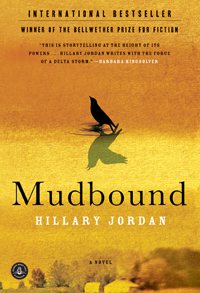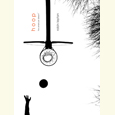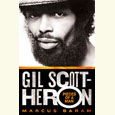The Other Scarlet Letter
In Hillary Jordan’s provocative new thriller, “A” is for more than adultery
On the acknowledgments page of her second novel, Hillary Jordan thanks, among others, Nathaniel Hawthorne, “for giving me such broad shoulders to stand on.” It’s an apt image—Jordan’s book is grounded in and inspired by The Scarlet Letter, although When She Woke succeeds on its own merits. The book is much more than “an old plot line dressed up in the techno future,” as Carolyn See sniffed in a review in The Washington Post.
As the novel opens, Jordan’s heroine, Hannah Payne, is Hawthorne’s scarlet “A” incarnate: “When she woke, she was red. Not flushed, not sunburned, but the solid, declarative red of a stop sign.” In Jordan’s imaginary near-future, criminals are “chromed”—genetically modified to make their skin colors match their transgressions. The U.S. is governed by conservative Christians—Roe v. Wade has been overturned, replaced by Sanctity of Life laws—and Hannah, whose affair with a priest ended with her abortion, is in prison for murder. After a month of solitary confinement, she will be released into a world where Chromes are brutally ostracized. The irony is that Hannah grew up in the strictest of fundamentalist households. She was a girl “whose life had revolved around the twin nuclei of her family and the church”—living with her parents, attending church and Bible study several times a week: “Hannah had been a good girl and a good Christian, obedient to her parents’ wishes—in almost everything.”
 The “almost” is, of course, crucial. Hannah is not a rebellious spirit, but when she falls in love with the Reverend Aidan Dale she becomes disillusioned, gradually and almost against her will, with the political and religious dogma she accepted without question during her youth. She struggles with her decision to end the pregnancy on her own terms: “She had already asked and answered the most important [questions] in her own mind: whether this was murder (yes), whether she would go to hell for it (yes), whether she had any other choice (no).” And she bravely refuses to betray both her abortionist and her lover. Still, she comes across as stolidly passive throughout much of the novel, propelled toward choices that come from having no choice. Only after being captured, convicted, Chromed, and released does Hannah begin to act on her own volition. She begins as a brave victim and struggles throughout the novel to become truly victorious.
The “almost” is, of course, crucial. Hannah is not a rebellious spirit, but when she falls in love with the Reverend Aidan Dale she becomes disillusioned, gradually and almost against her will, with the political and religious dogma she accepted without question during her youth. She struggles with her decision to end the pregnancy on her own terms: “She had already asked and answered the most important [questions] in her own mind: whether this was murder (yes), whether she would go to hell for it (yes), whether she had any other choice (no).” And she bravely refuses to betray both her abortionist and her lover. Still, she comes across as stolidly passive throughout much of the novel, propelled toward choices that come from having no choice. Only after being captured, convicted, Chromed, and released does Hannah begin to act on her own volition. She begins as a brave victim and struggles throughout the novel to become truly victorious.
Jordan skillfully slips the particulars of her not-so-distant-future dystopia into the plot. Instead of carefully describing a brave new world right off the bat, she lets the narrative unspool naturally. Hannah has seen plagues, political upheaval, and catastrophic nuclear wars—background details that Jordan drops casually into the storyline, with the result that the reader is jarred anew each time. There’s plenty in Hannah’s world that resembles our own (McDonald’s is as ubiquitous as ever), and these overlaid similarities serve, paradoxically, to make the novel even more unsettling.
The world of When She Woke seems eminently plausible; Jordan does not set out to describe a worst-case scenario, nor to play upon a culture’s collective fear for its future, but she makes the cost of complacency chillingly clear: “You’re mighty quiet, Hannah,” a secondary character observes near the end of the book. “What do you think?”
“I don’t,” Hannah snaps in return. “I was raised not to.”
Hillary Jordan will read from and sign copies of When She Woke on November 30 at 6 p.m. at The Booksellers at Laurelwood in Memphis.


